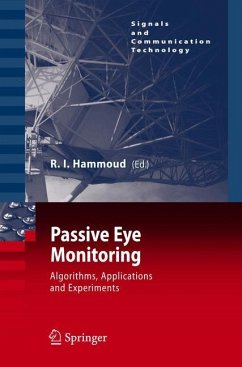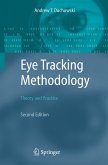This groundbreaking resource offers a comprehensive overview of cutting-edge video-based eye monitoring algorithms, as well as human factor algorithms and experiments. Helping to apply the skills in Intelligent Human Machine Interaction (IHMI), this practical reference shows how the core low-level building blocks are implemented and how they are linked with human factor algorithms and human-machine interfaces (HMI) in smart vehicles, sensitive environments and medical facilities.
The advent of digital technology and image processing in the 1970s has marked a new era of human machine interaction. Since then there has been a rapid development in the eye monitoring ?eld - a sub-area of intelligent human computer interaction - that brought up e?cient ways for computers to support and assist humans while engaging in non-trivial tasks. The p- pose of this book is to provide a comprehensive in-depth coverage of both theory and practice of Passive Eye Monitoring. Passive Eye Monitoring is the science of teaching computers to autom- ically determine, in digital video streams, the spatial location, pupil's act- ity, 3D gaze direction, movements and closure state of an individual's eye, in real-time. It gained a lot of attention as opposed to invasive eye monitoring techniques like Electro Oculography and Magnetic Search Coil. Thetheory and practice of passive eye monitoring have now reached a level of maturity where good results can be achieved for applications - in automotive, mi- tary, medicine, information security and retrieval, typing and reading, online search, marketing, augmented and virtual reality, and video games - that were certainly non realistic a few decades ago. For instance, this technology has the potential to allow a disabled person to compose electronic messages, browseand navigatethroughwebpages,interactwith consumer - electronics devices, and while steering an operating machine, this technology monitors his/her fatigue and distraction state and issues appropriate vigilance wa- ings.
The advent of digital technology and image processing in the 1970s has marked a new era of human machine interaction. Since then there has been a rapid development in the eye monitoring ?eld - a sub-area of intelligent human computer interaction - that brought up e?cient ways for computers to support and assist humans while engaging in non-trivial tasks. The p- pose of this book is to provide a comprehensive in-depth coverage of both theory and practice of Passive Eye Monitoring. Passive Eye Monitoring is the science of teaching computers to autom- ically determine, in digital video streams, the spatial location, pupil's act- ity, 3D gaze direction, movements and closure state of an individual's eye, in real-time. It gained a lot of attention as opposed to invasive eye monitoring techniques like Electro Oculography and Magnetic Search Coil. Thetheory and practice of passive eye monitoring have now reached a level of maturity where good results can be achieved for applications - in automotive, mi- tary, medicine, information security and retrieval, typing and reading, online search, marketing, augmented and virtual reality, and video games - that were certainly non realistic a few decades ago. For instance, this technology has the potential to allow a disabled person to compose electronic messages, browseand navigatethroughwebpages,interactwith consumer - electronics devices, and while steering an operating machine, this technology monitors his/her fatigue and distraction state and issues appropriate vigilance wa- ings.








